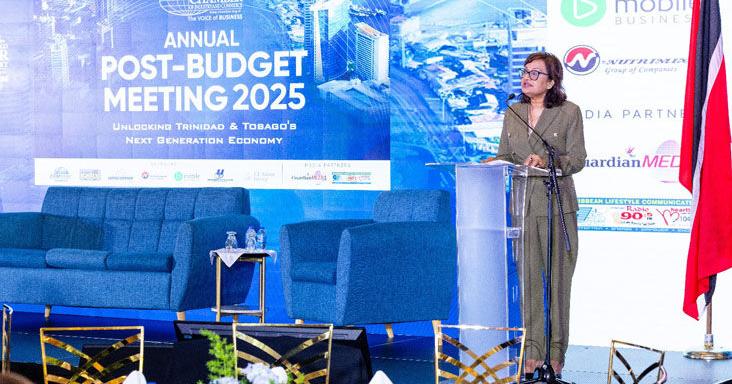Copyright brecorder

The large-scale manufacturing (LSM) sector has historically been one of the dynamic sectors in the national economy. For example, in the first decade of the current century it achieved a very high rate of growth of 7.5 percent annually with the overall economy being supported in achieving a growth rate of over 4.5 percent. This process of growth was facilitated by the export-led growth in manufactures of 7.3 percent annually. Thereafter, we have seen a cyclical process of growth in the sector. From 2018-19 onwards to 2024-25, cumulatively there has been no increase in value-added, at constant prices of 2015-16. It has remained virtually constant at Rs 3,275 billion. This is unambiguous evidence of the stagnation of the large-scale manufacturing over the last six years. In fact, the Quantum Index of Manufacturing (QIM) in 2024-25 is 1 percent below the level in 2018-19. Examination of the disaggregated data on the performance of individual industries reveals that some major industries have suffered big declines in output since 2018-19. This includes cotton yarn, cotton cloth, cement, cigarettes and steel products, with average annual rates of decline ranging from 1 percent to 9 percent. This is in sharp contrast to the performance of these industries from 2000-01 to 2006-07 with virtually all these industries achieving a double-digit rate of growth. Fortunately, from 2018-19 to 2024-25, some industries have continued to show some growth, including industries such as fertilizer, vegetable ghee, sugar and paints and varnishes. However, this was not enough to compensate for the decline in other industries, especially textiles. The outcome in the short-run, in 2024-25, is also of a decline. The QIM has registered a fall of 0.7 percent. Last year, industries, which showed a decline in output, include food products, cement, iron and steel products, fertilizer, sugar and various consumer durables. Fortunately, there has been a strong recovery in the automobiles and petrol products industries of 46.1 percent and 11.9 percent, respectively. However, here again the positive growth has not been adequate to compensate for the loss of output in other industries. One of the key factors, which has retarded growth of the large-scale manufacturing sector is the relatively slow growth in value of exports of only 3.9 percent per annum over the last six years. There has been a recovery in 2024-25 of over 8 percent. The absence of growth in large-scale manufacturing and the resulting stagnation has implied a loss of momentum in other major sectors like wholesale and retail trade and transport. From 2018-19 to 2024-25, these sectors averaged growth rates of only 2.1 percent and 2.4 percent, respectively. This was partly due to the absence of growth in the manufacturing sector. There is need to highlight that the PBS (Pakistan Bureau of Statistics) GDP statistics show remarkable buoyancy in the other parts of the manufacturing sector, consisting of small-scale manufacturing and slaughtering, with high growth rates of 7.9 percent and 6.2 percent, respectively. The likelihood of this happening is low because of the link between small-scale and large-scale manufacturing in major sectors like textiles, automobiles, etc. Further, with only 0.5 percent growth in real per capita income it is extremely unlikely that the consumption of livestock products would have risen annually by over 6 percent. The bottom line is that there is a virtuous cycle of relationship between the growth of the manufacturing sector and the overall economy. If the GDP growth is low, as we have seen since 2018-19, then there is slow growth in demand for manufactured consumer products. This restricts growth of the sector and thereby also impacts on the GDP growth. The slow growth in the large-scale manufacturing is also reflected in a worsening of the key financial ratios. The textiles industry has over 24 percent weight in the QIM and is the dominant exporter. The various industries in the textile group, which are quoted in the stock market, have seen a major worsening in the profit margin on sales. It has collapsed from 8.3 percent in 2021 to only 1.3 percent in 2024. Similarly, the return on equity has diminished from 24 percent in 2022 to only 3.6 percent in 2024. A similar trend is observed also in the other industries. The fundamental question is what factors have led to the stagnation of the large-scale manufacturing since 2018-19. The demand side factors have been highlighted above. There is need also to identify the supply-side and cost-related factors. The first factor relates to the link between the manufacturing and the agricultural sector via the supply of raw materials. The single most important input is cotton. The production of cotton has declined sharply in Pakistan from a peak of 14 million bales in 2011-12 to only 7 million bales in 2024-25. Imports of cotton have not been able to fully substitute for the decline in domestic production. Consequently, the first stage in the value-added process in textiles has been badly affected. The output of cotton yarn has fallen by over 33 percent since 2011-12. The other more recent development is the physical restriction on imports in recent years, due to acute shortage of foreign exchange. In 2022-23, when foreign exchange reserves fell to a critically low level, imports, for example, of the automobile industry were severely restricted. Consequently, the output of the industry fell by almost 60 percent. Imports have also been restricted on other industries like machinery and equipment, consumer durables, etc. The other factor with a big negative impact is the extraordinary tax burden on large-scale manufacturing. The sector’s’ share in the GDP is 8 percent. However, it is estimated that it contributes 18.5 percent to the revenues from the income tax and as much as 62.3 percent to federal indirect taxes, including the sales tax, customs duty and excise duty. The effective overall tax burden on large-scale manufacturing is 35.6 percent of the sectoral value-added as compared to 11.1 percent on the economy as a whole. Electricity and gas tariffs have also been contributing to significant increases in costs of manufacturing. Between 2019 and 2024 the basic electricity tariff for industry went up cumulatively by as much as 121.8 percent, while the gas tariff for fertilizer industry rose by 432 percent and that for other industries by 110 percent. Fortunately, there are moves recently to effectively reduce electricity tariffs. The overall impact of output and value-added stagnation leading to a big loss of profitability since 2018-19 is a sharp withdrawal of private investment from the manufacturing sector. At 2015-16 constant prices, the investment in the manufacturing sector has sharply contracted from Rs 706 billion in 2018-19 to only Rs 377 billion in 2024-25, implying a drop in real terms of over 46 percent. The current level of new investment is estimated to be not even adequate to cover the depreciation in the value of machinery and other assets in the sector. Consequently, the overall capital stock in the large-scale manufacturing sector has probably declined in recent years. This implies that the ability does not exist of production by units in the sector to increase rapidly. Clearly, the fall in investment is not only due to the high interest rates, which reached a peak in 2022-23. It has also been the consequence of retarded growth and stagnation and a quantum decline in profitability. Following the achievement of a degree of stabilization of the economy, the time has come for reviving the process of higher growth, so as to contain the levels of unemployment and poverty in the country, which have unfortunately reached a peak due to low growth. The large-scale manufacturing sector must begin to play its earlier role of leading the process of higher growth in the economy, with moves both on the demand-side and supply-side of the sector on a priority basis. This must include focus on increased output of cotton and other agricultural inputs, rationalization of taxes on the sector and energy tariffs, end to import restrictions and avoiding overvaluation of the rupee. The target must be for investment in the sector to rise at least to the level in 2018-19 and enable the sector to get back to a growth rate of more than 5 percent. Copyright Business Recorder, 2025



